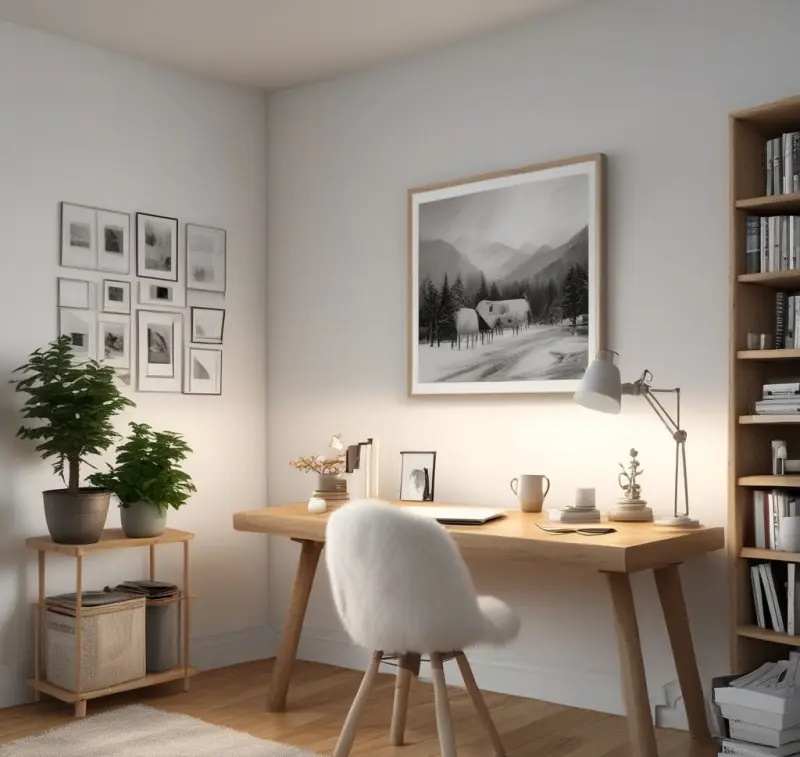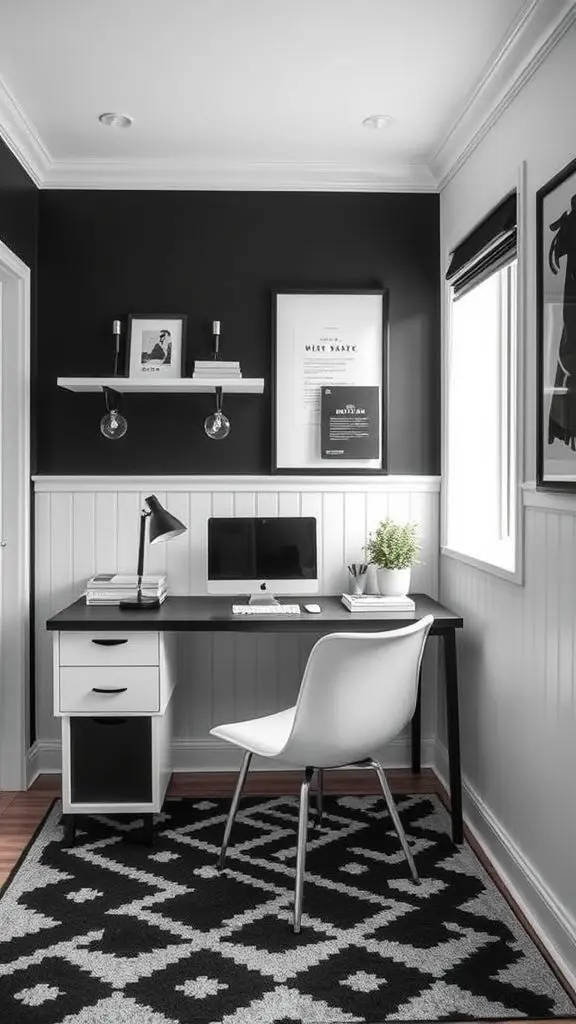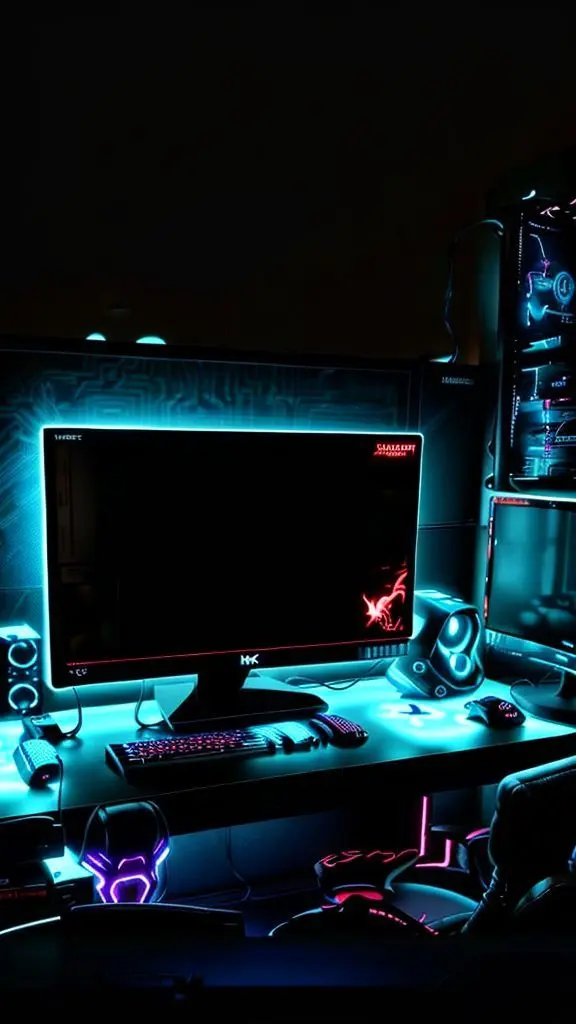Working from home has become the new normal for millions of us, but let’s be honest—not everyone has a Pinterest-perfect office setup.
I spent my first year of remote work bent over my kitchen table, surrounded by coffee stains and yesterday’s dishes.
Sound familiar? The reality is, building an effective home office doesn’t need a mansion or a large budget.
Whether you’re dealing with a small apartment corner or a spare bedroom that serves as storage, the correct home office ideas may convert any area into a productivity powerhouse.
Your workstation should excite you, not deplete your vitality before you even start your day.
1. Artistic Wall Displays That Spark Creativity
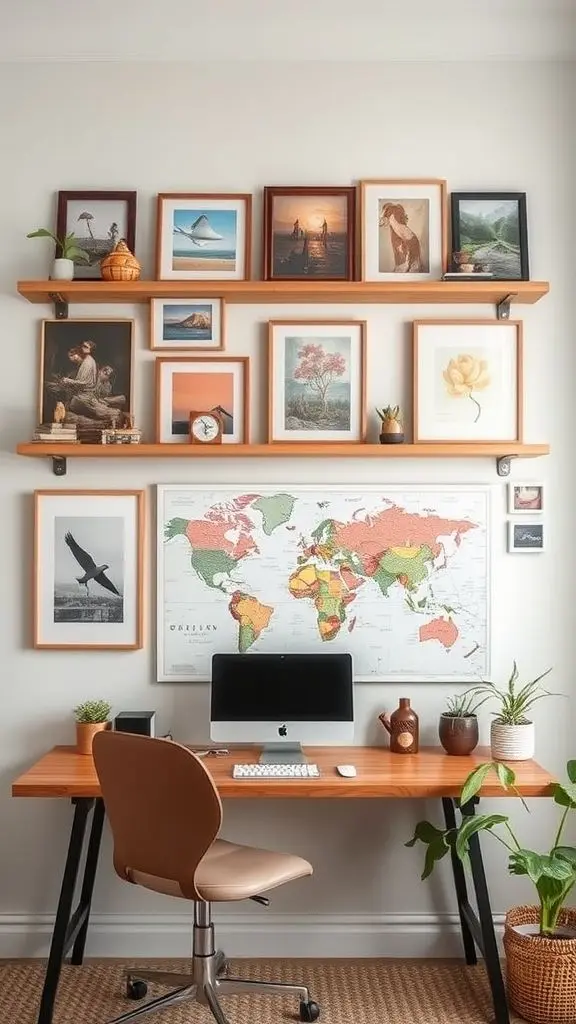
Transform plain walls into stimulating focal areas with carefully collected artwork and personal collections.
Mix framed pictures, miniature sculptures, and even antique postcards to create a gallery wall that represents your individuality.
I adore switching seasonal items to keep things fresh—it’s like giving your brain a short vacation without leaving your desk.
Consider adding a huge global map where you may pin dream trips or indicate areas you’ve worked remotely from.
Don’t forget about floating shelves to exhibit tiny plants, books, or ornamental artifacts.
The issue is balance: enough visual appeal to promote creativity without producing clutter that distracts from your responsibilities.
2. Smart Storage Solutions for Small Spaces
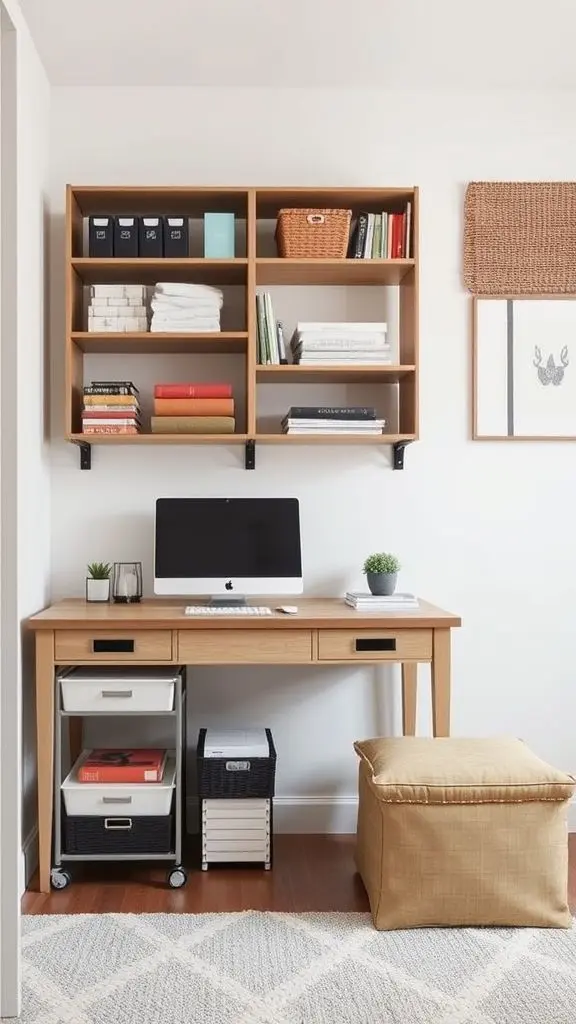
Maximize every square inch with ingenious storage tricks that keep clutter at bay while preserving design.
Under-desk rolling trolleys may keep materials and tuck away neatly when not required.
Wall-mounted organizers with pockets are great for storing commonly used things within arm’s reach.
Think vertical—tall, slender bookshelves attract the eye upward and give the sense of taller ceilings.
Ottoman storage boxes do double duty as sitting for visitors and hiding areas for papers.
Cable management boxes remove the spaghetti tangle of cables that inexplicably proliferate overnight.
Remember, a clean place implies a clear mind, and these ideas illustrate you don’t need a vast room to be organized.
3. Comfort-First Furniture That Supports Your Body
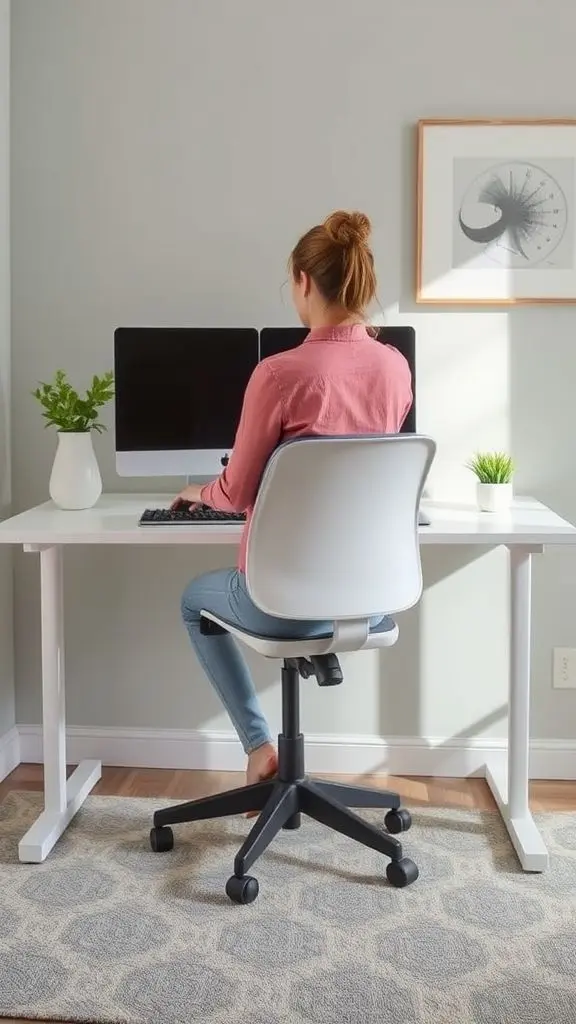
Invest in items that value your physical well-being over the long run.
An adjustable-height desk enables you alternate between sitting and standing during the day, mitigating the health dangers of extended sitting.
Your chair should accommodate your lower back’s natural curve—trust me, your future self will thank you for not cheating on this one.
Consider a footrest if your feet don’t touch the floor pleasantly while sitting correctly.
Monitor arms enable you to place displays at eye level, minimizing neck strain from gazing down continually.
A supporting keyboard tray helps alleviate wrist discomfort.
Yes, ergonomic furniture costs more initially, but it’s less than physical treatment expenditures afterward.
4. Peaceful Reading Corner for Mental Breaks
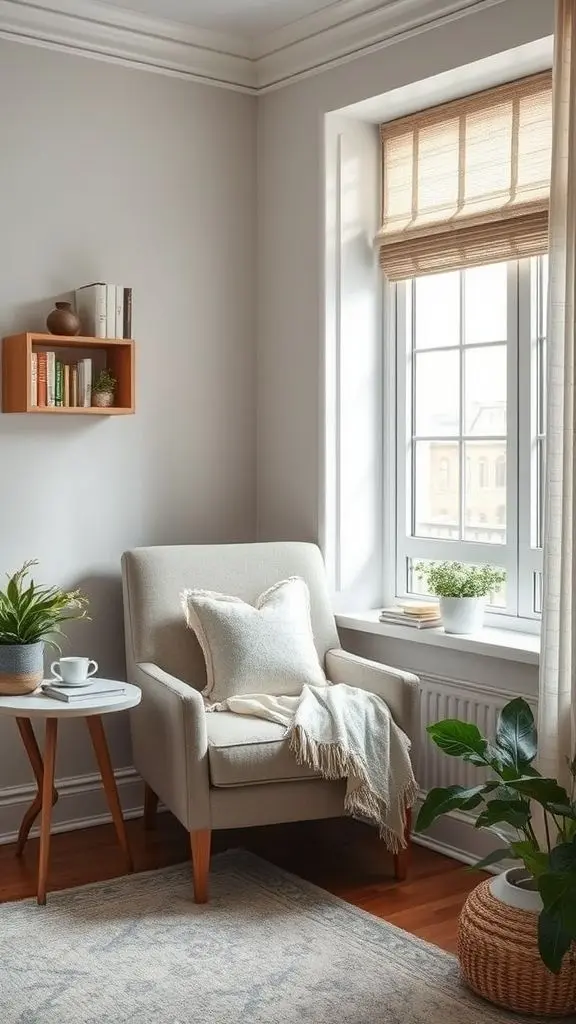
Create a separate refuge inside your business where you may rest and replenish your mental batteries.
A comfy armchair positioned near natural light is a great setting for afternoon reading periods or morning coffee routines.
Add a tiny side table for your beverage and current reading, and a nice throw blanket for those cold mornings when the heating hasn’t turned up yet.
This space doesn’t need to be huge—even a window seat with pillows works well.
The idea is having a specific place that communicates to your brain it’s time to calm down.
Sometimes walking away from your desk for 10 minutes with a good book is precisely what you need to tackle that persistent issue.
5. Green Elements That Breathe Life Into Your Space
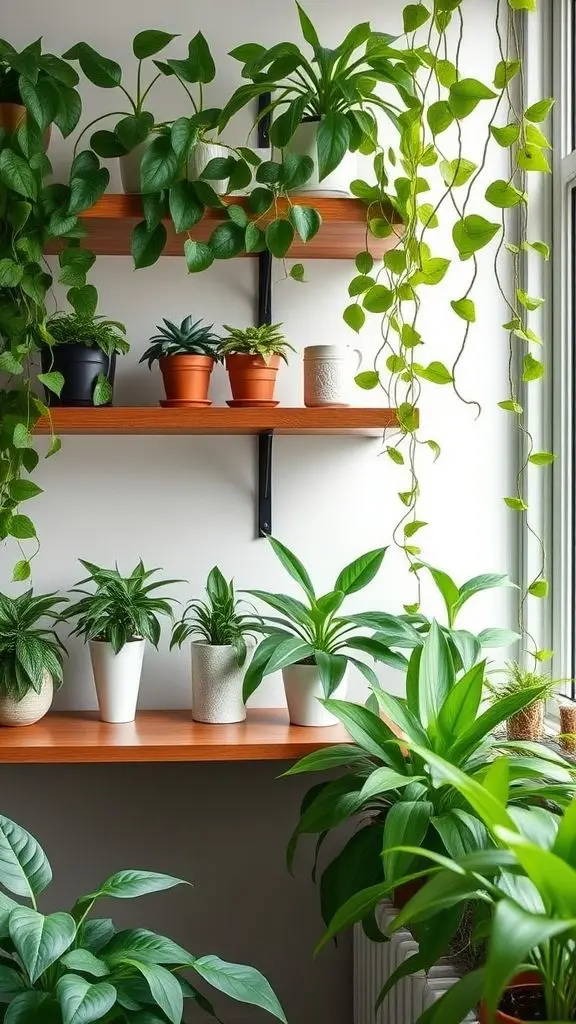
Introduce plants that flourish in indoor circumstances while cleansing the air you breathe all day.
Snake plants are very indestructible and withstand low light conditions—perfect for novices or those with less-than-green thumbs.
Pothos vines may trail gently from high shelves, producing natural curtains of greenery.
Small succulents on your desk give color without taking up valuable room.
If you’re concerned about care, high-quality fake plants have gone a long way and still give visual advantages.
Consider a tiny herb garden on a sunny ledge for fresh basil or mint with your afternoon tea.
Plants don’t simply look lovely; studies indicate they really enhance productivity and lower stress levels.
6. Custom Storage Solutions Built Into Your Space
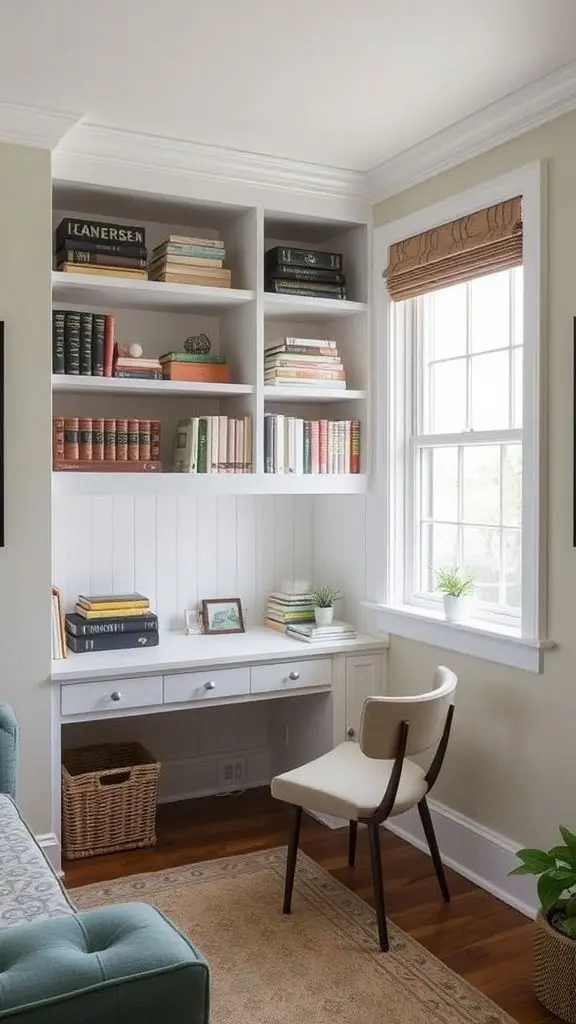
Design storage that seems like it was always supposed to be there rather than introduced as an afterthought.
Built-in bookshelves around windows utilizes problematic areas while providing a warm, library-like environment.
Under-stair storage might contain workplace supplies, seasonal decorations, or rarely-used equipment.
Custom desk hutches offer vertical storage without eating into floor space.
Consider hiring a local carpenter for floating shelves that properly suit your wall dimensions—it’s typically more inexpensive than you’d anticipate.
Murphy desks that fold into the wall are fantastic for multi-purpose spaces.
These solutions add value to your house while tackling unique storage concerns that generic furniture just can’t solve adequately.
7. Tech Setup That Actually Improves Your Work Flow
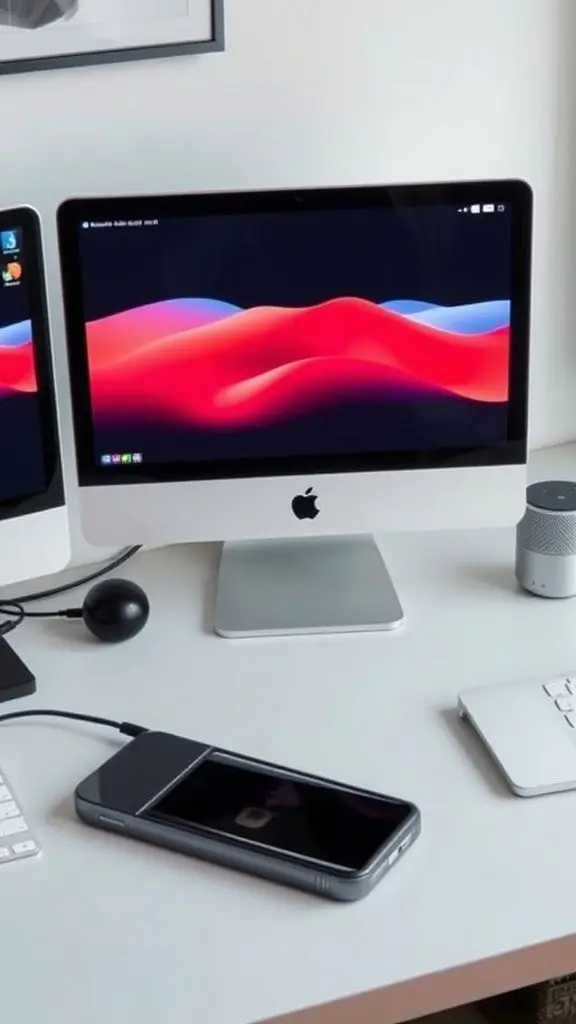
Streamline your digital workflow with technologies that reduce everyday problems rather than generate new ones.
A docking station converts your laptop into a desktop configuration with more displays, bigger speakers, and extra connections for devices.
Wireless charging pads keep your phone battery topped up without digging for wires.
Smart speakers can manage calls, play focus music, or create reminders without touching your computer.
Consider a document camera for effortlessly exchanging tangible documents during video sessions.
High-speed internet is non-negotiable—upgrade if you’re frequently waiting for things to upload or download.
The ideal technology should function discreetly in the background, enhancing your productivity rather than requiring continual attention and debugging.
8. Multi-Purpose Rooms That Work Double Duty
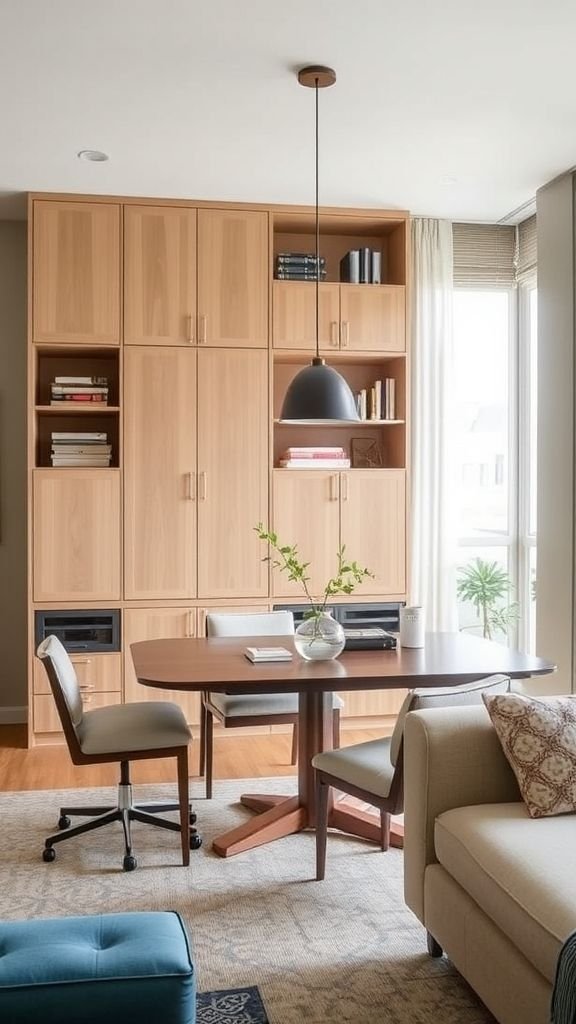
Master the art of rooms that fluidly shift between work and recreation without feeling tight or hectic.
A dining table may act as your workstation during business hours, then host family meals in the evening with the correct organizing system.
Rolling carts store work materials and move away when it’s time to entertain visitors.
Murphy beds in spare rooms enable the area to operate as both workplace and guest room.
Room dividers establish visible separation between work and living spaces in studio flats.
The challenge is picking furniture items that fulfill numerous roles while preserving clean lines and coordinated style across the area.
9. Lighting Strategies That Energize and Focus
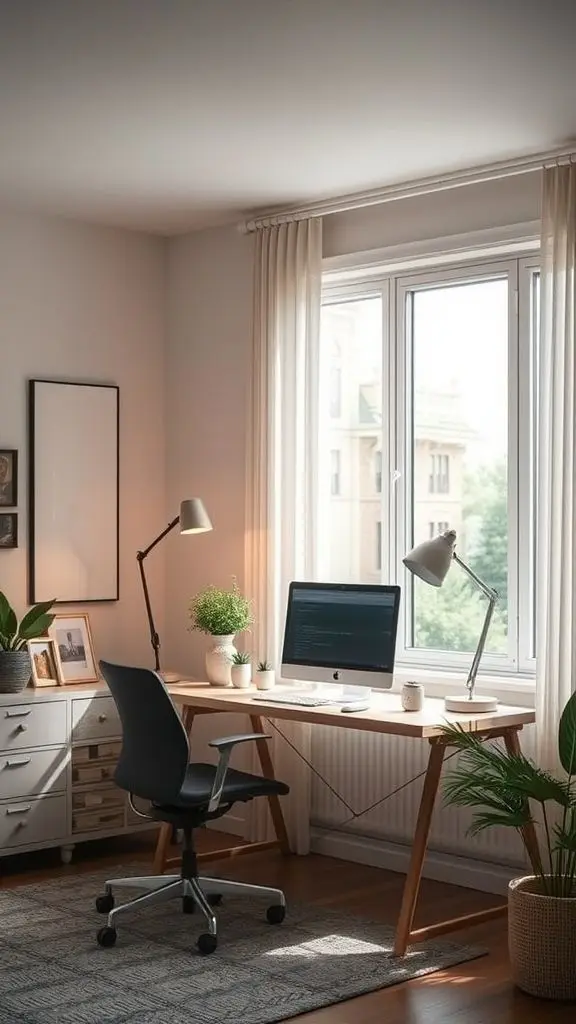
Layer various light sources to create the right atmosphere for any work or time of day.
Natural light should be your main source whenever possible—position your workstation perpendicular to windows to avoid glare on displays.
Task illumination, like a nice desk lamp, removes shadows while you’re working or reviewing paperwork.
Ambient illumination from floor lamps or string lights offers a pleasant, welcome setting for video conversations.
Consider smart lamps that vary color temperature throughout the day, simulating natural sunshine patterns to help your circadian cycle.
Avoid overhead fluorescent lighting whenever possible—it’s harsh and unattractive for video meetings.
Good lighting isn’t simply useful; it influences your mood and energy levels throughout the whole workday.
10. Clean Lines and Clutter-Free Surfaces
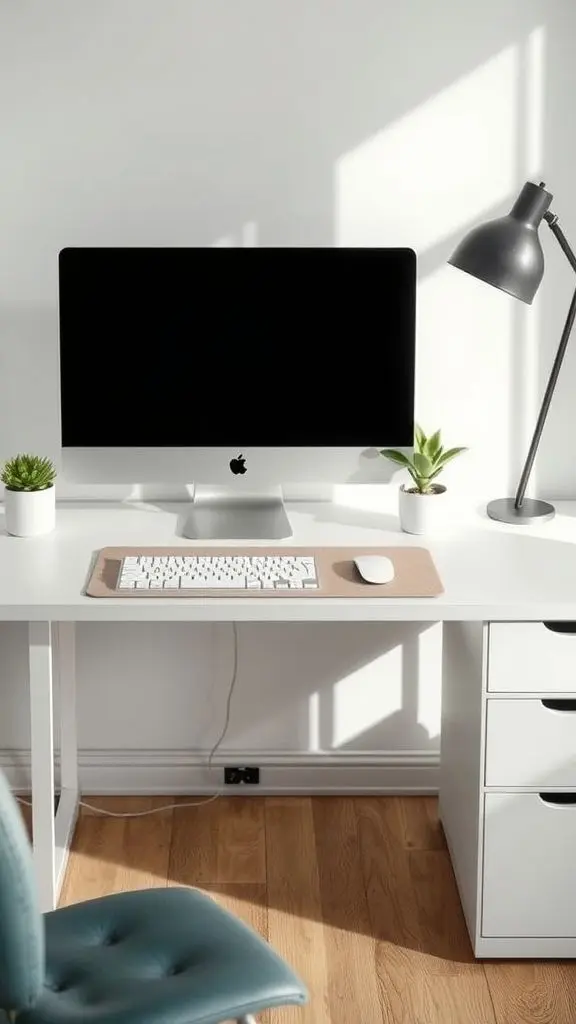
Embrace the power of less with a minimalist workplace configuration that fosters clear thinking and eliminates visual distractions.
Keep just necessary stuff on your desktop: computer, a tiny plant, and possibly one important object that offers you delight.
Everything else should have a specific place in drawers or on shelves.
A basic desk pad protects surfaces while providing a burst of color or texture.
Choose a restricted color palette—two or three colors max—to produce harmony rather than confusion.
Hidden cable management minimizes technological connections from producing visual disturbance.
This approach isn’t about being harsh or frigid; it’s about generating breathing area for your mind to concentrate on what genuinely important.
Frequently Asked Questions
How big should a home office be?
You don’t need a big house to make a good place to work. If you arrange carefully, you can fit a desk, chair, and storage in a space as small as 6×8 feet.
To make the most of tiny spaces, use vertical storage and furniture that can be used for more than one thing. The most important thing is to have a room that is just for you, not a big one.
How much money do I need to set up a simple home office?
Depending on your demands and quality choices, a working system might cost between $500 and $2000. First, get a decent workstation and chair.
Then, slowly add accessories. You may get good quality items at lesser rates in thrift shops and online marketplaces. Remember, this is an investment in your everyday comfort and productivity.
What’s the greatest mistake individuals make when setting up their home office?
Choosing style above utility, particularly when it comes to seats. That wonderful chair may appear ideal on Instagram, but if it doesn’t support your back correctly, you’ll regret it after a few weeks of full-time usage.
Always try furniture for comfort before committing.
How can I separate business and personal life in a shared space?
Create physical and visible barriers using room partitions, different lighting, or even simply a special chair that’s reserved for work.
Establish traditions like shutting your laptop or covering your desk at the end of the workday. These impulses let your brain move between states.
Should I paint my home office a certain color?
Colors do alter mood and productivity. light blues and greens inspire quiet attention, while warmer tones like light yellows may enhance creativity.
Avoid bright reds or oranges in work places since they might be overstimulating. Neutral backgrounds with bright accents allow you freedom to alter things up seasonally.
Making Your Home Office Work for You
Creating the ideal home office isn’t about duplicating someone else’s setup—it’s about establishing a place that supports your unique work style and gets you truly happy to start each day.
The most gorgeous workplace in the world won’t assist if it doesn’t perform for your unique requirements.
Start with one or two adjustments that address your major pain spots, whether that’s better lighting, more storage, or simply a more comfortable chair.
Small changes compound over time, and before you realize it, you’ll have a workstation that actually suits you.
Your workplace should be a reflection of your personality and a stimulus for your best work, not simply another room in your home.
